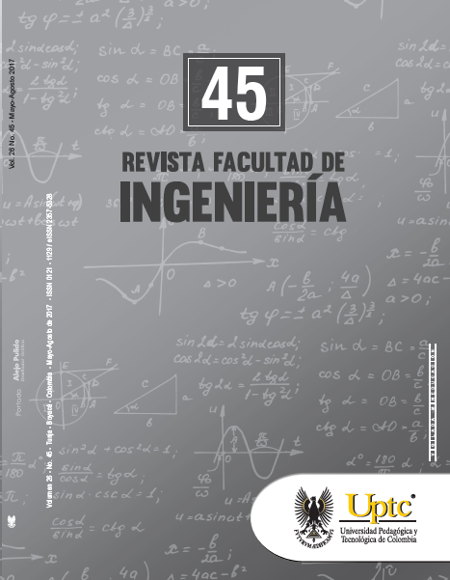Improvement of silver nanoparticle impregnation on cotton fabrics using a binder

Abstract
In this work, silver nanoparticles were synthesized by the polyol process, which reduces silver nitrate with ethylene glycol. The temperature effect and the polyvinylpyrrolidone (PVP) amount were studied. The temperatures used were 100, 120 and 140 °C. Three ratios of 0.00, 0.25, and 0.50 (% w/w) of PVP/AgNO3 were established. Nanoparticles with sizes less than 30 nm were obtained in conditions of 120 °C and 0.5 % w/w of PVP/AgNO3. Posteriorly, nanoparticles in concentrations of 10 and 20 ppm were deposited on cotton fabric by the pad-dry-cure technique, in order to analyze their bactericidal properties against the Gram positive bacteria Staphylococcus aureus 25923. The tests showed that cotton fabric with nanoparticles in concentrations of 10 and 20 ppm had good bactericidal properties, reducing bacterial colonies by over 98 %. Finally, a washing stability study of the fabrics impregnated with silver nanoparticles was performed, and an acrylic binder was added during the impregnation process. The results were obtained by bacteriological analyzes.Keywords
Bactericidal Properties, Binder, Cotton, Silver Nanoparticles
References
- B. Reidy, A. Haase, A. Luch, K. Dawson, and I. Lynch, “Mechanisms of Silver Nanoparticle Release, Transformation and Toxicity: A Critical Review of Current Knowledge and Recommendations for Future Studies and Applications,” Materials, vol. 6 (6), pp. 2295–2350, Jun. 2013. DOI: http://doi.org/10.3390/ma6062295. DOI: https://doi.org/10.3390/ma6062295
- I. Q. H. Tran, V. Q. Nguyen, and A.-T. Le, “Silver nanoparticles: synthesis, properties, toxicology, applications and perspectives,” Adv. Nat. Sci. Nanosci. Nanotechnol., vol. 4 (3), pp. 33001-33021, 2013. DOI: http://doi.org/10.1088/2043-6262/4/3/033001. DOI: https://doi.org/10.1088/2043-6262/4/3/033001
- A. Haider, and I. Kang, “Preparation of Silver Nanoparticles and Their Industrial and Biomedical Applications: A Comprehensive Review,” Adv. Mater. Sci. Eng., vol. 2015, pp. 1-16, 2015. DOI: http://doi.org/10.1155/2015/165257. DOI: https://doi.org/10.1155/2015/165257
- T. Kirstein, Multidisciplinary Know-How for Smart-Textiles Developers. Cambridge, United Kingdom: Woodhead Publishing Limited, 2013. DOI: http://doi.org/10.1533/9780857093530. DOI: https://doi.org/10.1533/9780857093530
- I. Perelshtein, G. Applerot, N. Perkas, G. Guibert, S. Mikhailov, and A. Gedanken, “Sonochemical coating of silver nanoparticles on textile fabrics (nylon, polyester and cotton) and their antibacterial activity,” Nanotechnology, vol. 19 (24), p. 245705, Jun. 2008. DOI: http://doi.org/10.1088/0957-4484/19/24/245705. DOI: https://doi.org/10.1088/0957-4484/19/24/245705
- A. Wasif, and S. Laga, “Use of Nano Silver as an Antimicrobial Agent for Cotton,” AUTEX Research Journal, vol. 9 (1), pp. 5-13, Mar. 2009.
- H. Lee, and S. Jeong, “Bacteriostasis and Skin Innoxiousness of Nanosize Silver Colloids on Textile Fabrics,” Textile Research Journal, vol. 75 (7), pp. 551-556, Jul. 2005. DOI: http://doi.org/10.1177/0040517505053952. DOI: https://doi.org/10.1177/0040517505053952
- M. Iqbal, J. Mughal, M. Sohail, A. Moiz, K. Ahmed, and K. Ahmed, “Comparison between Pigment Printing Systems with Acrylate and Butadiene Based Binders,” JASMI, vol. 2 (2), pp. 87-91, Jun. 2012. DOI: http://doi.org/10.4236/jasmi.2012.22016. DOI: https://doi.org/10.4236/jasmi.2012.22016
- M. El-Rafie, H. Ahmed, and M. Zahran, “Characterization of nanosilver coated cotton fabrics and evaluation of its antibacterial efficacy,” Carbohydrate polymers, vol. 107, pp. 174-81, Jul. 2014. DOI: http://doi.org/10.1016/j.carbpol.2014.02.024. DOI: https://doi.org/10.1016/j.carbpol.2014.02.024
- K. Gupta, M. Jassal, and A. Agrawal, “Functional Finishing of Cotton Using Titanium Dioxide and Zinc Oxide Nanoparticles,” Research Journal of Textile and Apparel, vol. 11 (3), pp. 1-10, Aug. 2007. DOI: http://doi.org/10.1108/RJTA-11-03-2007-B001. DOI: https://doi.org/10.1108/RJTA-11-03-2007-B001
- K. Abou El-Nour, A. Eftaiha, A. Al-Warthan, and R. Ammar, “Synthesis and applications of silver nanoparticles,” Arabian Journal of Chemistry, vol. 3 (3), pp. 135-140, Jul. 2010. DOI: http://doi.org/10.1016/j.arabjc.2010.04.008. DOI: https://doi.org/10.1016/j.arabjc.2010.04.008
- N. L. Pacioni, C. D. Borsarelli, V. Rey, and A. V. Veglia, “Synthetic Routes for the Preparation of Silver Nanoparticles,” Silver Nanoparticle Applications, 2015. DOI: http://doi.org/10.1007/978-3-319-11262-6_2. DOI: https://doi.org/10.1007/978-3-319-11262-6_2
- A. Ruíz-Baltazar, and G. Rosas, “Efecto de la concentración de agente surfactante (PVP) en el tamaño y distribución de nanopartículas de plata sintetizadas por el método de reducción química,” in 7° Foro de Ingeniería e Investigación en Materiales, 2010, vol. 7, pp. 13-18.
- E. Tomaszewska, K. Soliwoda, K. Kadziola, B. Tkacz-szczesna, G. Celichowski, M. Cichomski, W. Szmaja, and J. Grobelny, “Detection Limits of DLS and UV-Vis Spectroscopy in Characterization of Polydisperse Nanoparticles Colloids,” Journal of Nanomaterials, vol. 2013, pp. 1-10, Jun. 2013. DOI: http://doi.org/10.1155/2013/313081. DOI: https://doi.org/10.1155/2013/313081
- V. Starov, Nanoscience: Colloidal and Interfacial Aspects. USA: CRC Press, Jun. 2010. DOI: https://doi.org/10.1201/EBK1420065008
- A. Šileikaitė, J. Puišo, I. Prosyčevas, and S. Tamulevičius, “Investigation of Silver Nanoparticles Formation Kinetics During Reduction of Silver Nitrate with Sodium Citrate,” vol. 15 (1), pp. 1-7, Jan. 2009.
- S. Skoglund, T. Lowe, J. Hedberg, E. Blomberg, I. Wallinder, S. Wold, and M. Lundin, “Effect of Laundry Surfactants on Surface Charge and Colloidal Stability of Silver Nanoparticles,” Langmuir, vol. 29 (28), pp. 8882–8891, Jul. 2013. DOI: http://doi.org/10.1021/la4012873. DOI: https://doi.org/10.1021/la4012873
- C. R. Arroyo, A. Debut, A. V. Vaca, C. Stael, K. Guzman, B. Kumar, L. Cumbal, Reliable Tools for Quantifying the Morphogical Properties at the Nanoscale, Biology and Medicine, vol. 8 (3), pp. 1-4, 2016. DOI: http://doi.org/10.4172/0974-8369.1000281. DOI: https://doi.org/10.4172/0974-8369.1000281
- F. Zhang, X. Wu, Y. Chen, and H. Lin, “Application of Silver Nanoparticles to Cotton Fabric as an Antibacterial Textile Finish,” Fibers Polym., vol. 10 (4), pp. 496-501, Aug. 2009. DOI: http://doi.org/10.1007/s12221-009-0496-8. DOI: https://doi.org/10.1007/s12221-009-0496-8
- W. Siauw, “Silver Nanoparticles: A Valuable Weapon in Microbial Warfare,” Illumin, vol. XVII (II), 2011.
Downloads
Download data is not yet available.